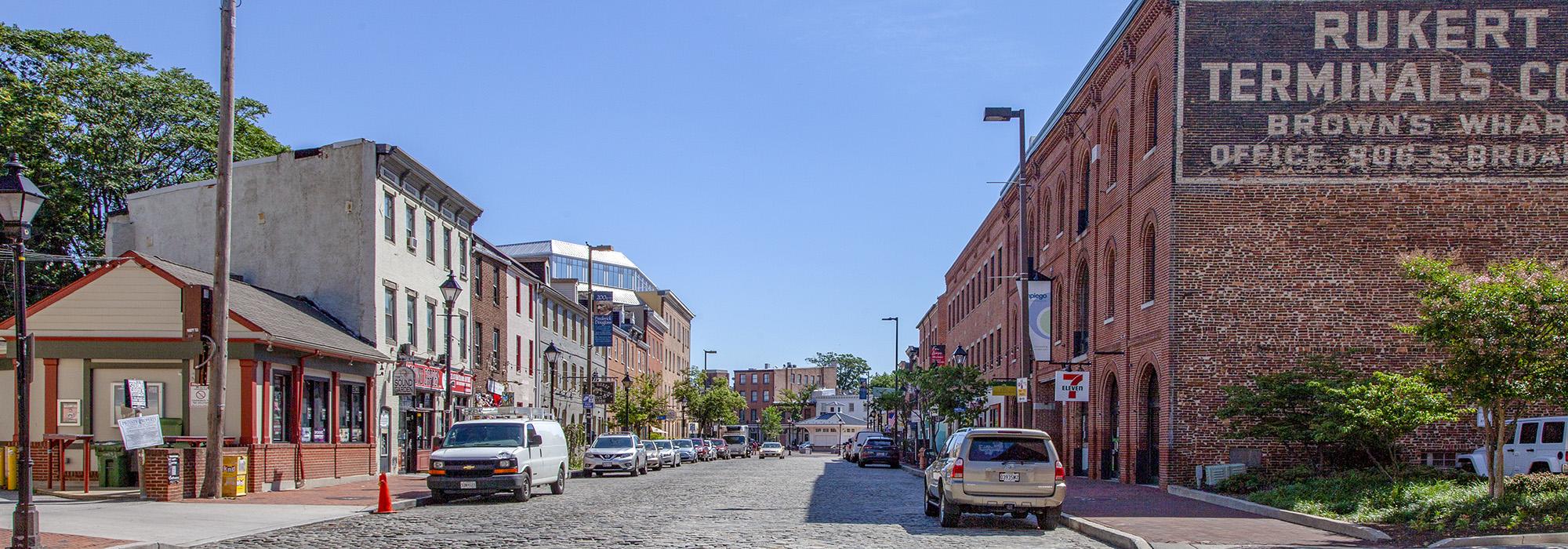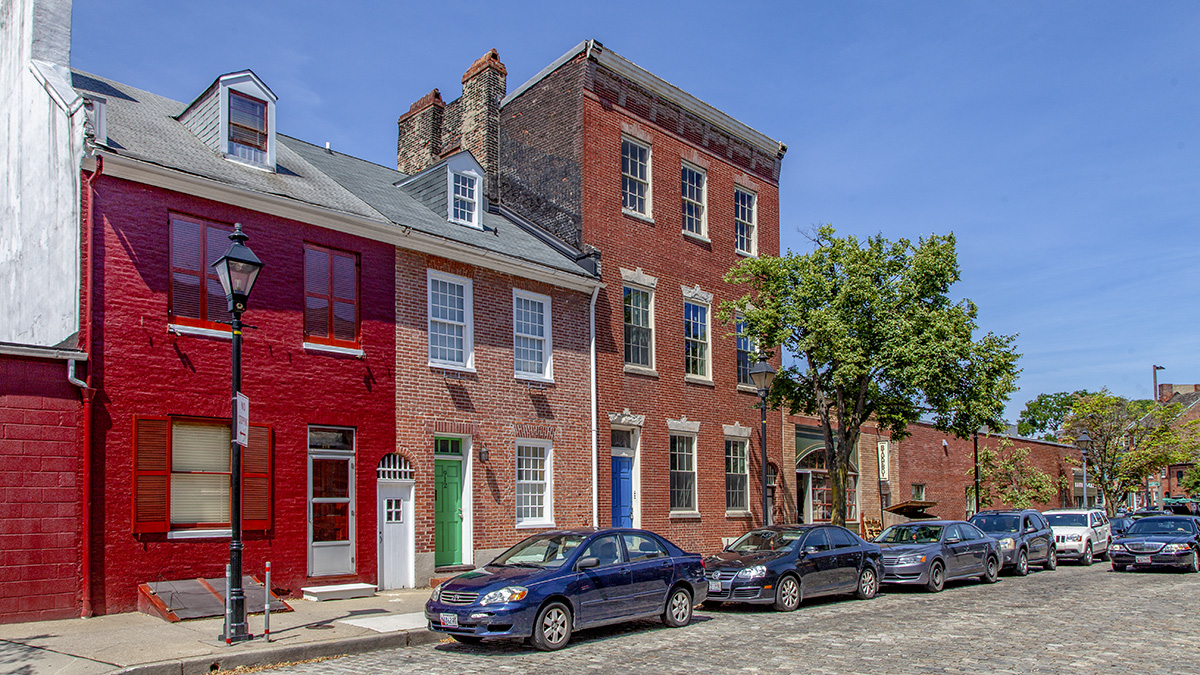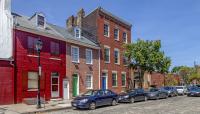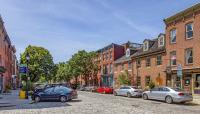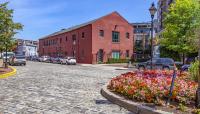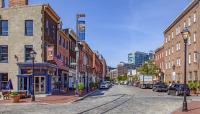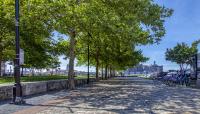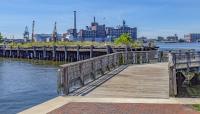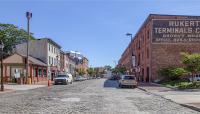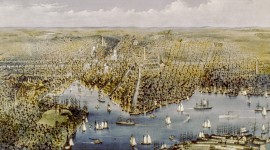Landscape Information
One of the city’s oldest neighborhoods and a significant part of its maritime history, Fells Point took its name from Quaker William Fell, who settled near a hook-shaped peninsula along the Patapsco River due to its deep water and proximity to timber. By 1761 his son Edward had planned the neighborhood’s gridded streets and begun selling plots in the area, which soon became a hub of colonial commerce and Baltimore’s primary port. Covering 75 acres, the district is defined by its densely packed, 2.5-story row houses, built throughout the nineteenth century. Wharfs, shipyards, and warehouses lined the waterfront and contributed to the industrial and commercial activity that spurred Baltimore’s growth.
Fells Point became a diverse community that housed and employed European immigrants and African Americans, including Frederick Douglass, who spent his youth in the shipyards as a caulker and learned to read and write before escaping enslavement in 1838; Douglass returned to the neighborhood in his later years, purchasing real estate and renting row houses to African Americans. Fells Point was also the site of the first African American-owned shipyard and union, organized by Isaac Myers in 1866.
No longer an industrial port, the waterfront is now an entertainment destination dotted with condominiums, shops, and restaurants, while the many intact row houses have become fashionable residences. The neighborhood’s open spaces consist of paved walkways along the waterfront and Broadway, which bifurcates the neighborhood as it runs from north to south. Thames Street Park, to the southeast, includes a playground and open lawn bordered by shade trees, and the five-acre Frederick Douglass-Issac Myers Maritime Park, a riverfront landscape at the southwestern tip of the peninsula, marks the historic site of Chase’s Wharf. The Fells Point Historic District was listed in the National Register of Historic Places in 1969.



